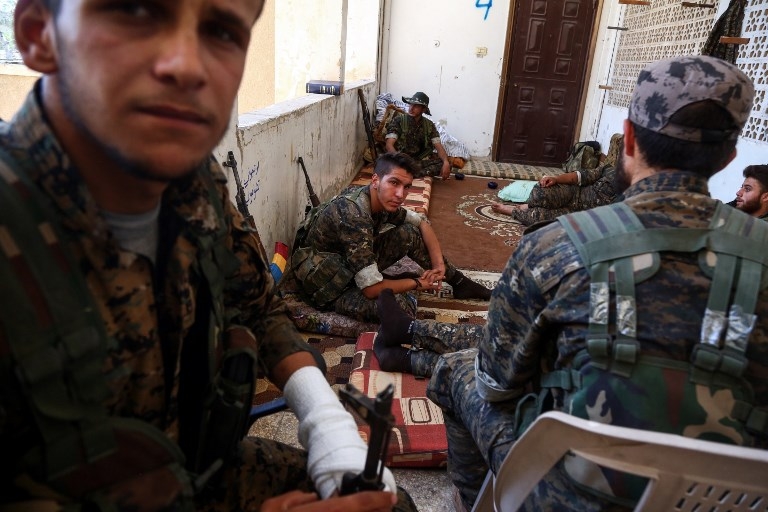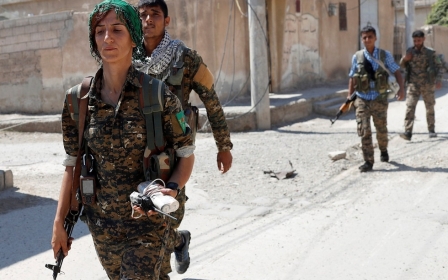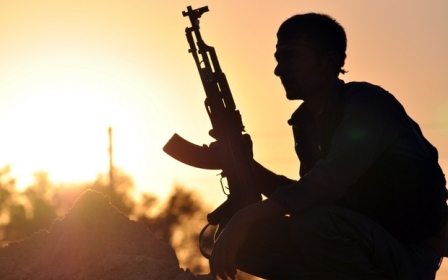US-backed forces in new attack on IS in Syria's Raqqa, says monitor

US-backed fighters have launched a renewed attack on Islamic State group militants inside their Syrian bastion Raqqa, seeking to retake a key eastern neighbourhood, a monitor said on Saturday.
The SDF first ousted IS from Al-Senaa on 12 June, less than a week after they first entered Raqqa.
But IS pushed back, unleashing a slew of car bombs and attacks from weaponised drones and taking back control of the neighbourhood on Friday.
"It was Daesh's most intense attack yet," a military source from the US-backed fighters told AFP, using an Arabic acronym for IS.
The source said IS had surrounded about 50 members of the Elite Forces - US-backed Arab fighters allied with the SDF - before heavy coalition air strikes broke the siege.
Al-Senaa is key for both the SDF and IS because it is adjacent to the city centre, where most IS fighters defending Raqa are thought to be holed up.
Around 2,500 militants are fighting inside Raqqa, according to British Major General Rupert Jones, a deputy commander of the US-led coalition backing the SDF.
"At this point, the SDF has retaken about 30 percent of Al-Senaa. There are clashes and coalition air strikes in that neighbourhood and across the city," Abdel Rahman told AFP.
The US-led coalition has provided key support to the SDF's offensive, with air strikes, on-the-ground advisors, weapons, and equipment.
The Observatory said on Saturday that 193 civilians, including 33 children, had been killed in Raqqa since the US-backed SDF entered the city.
The Britain-based monitor said 219 IS fighters had been killed in air strikes and clashes in the same period, but he had no immediate toll for the SDF's losses.
The United Nations estimates some 100,000 civilians remain in Raqqa, with the jihadists accused of using them as human shields.
The city became infamous as the scene of some of the worst IS atrocities, including public beheadings, and is thought to have been a hub for planning attacks overseas.
Middle East Eye propose une couverture et une analyse indépendantes et incomparables du Moyen-Orient, de l’Afrique du Nord et d’autres régions du monde. Pour en savoir plus sur la reprise de ce contenu et les frais qui s’appliquent, veuillez remplir ce formulaire [en anglais]. Pour en savoir plus sur MEE, cliquez ici [en anglais].




